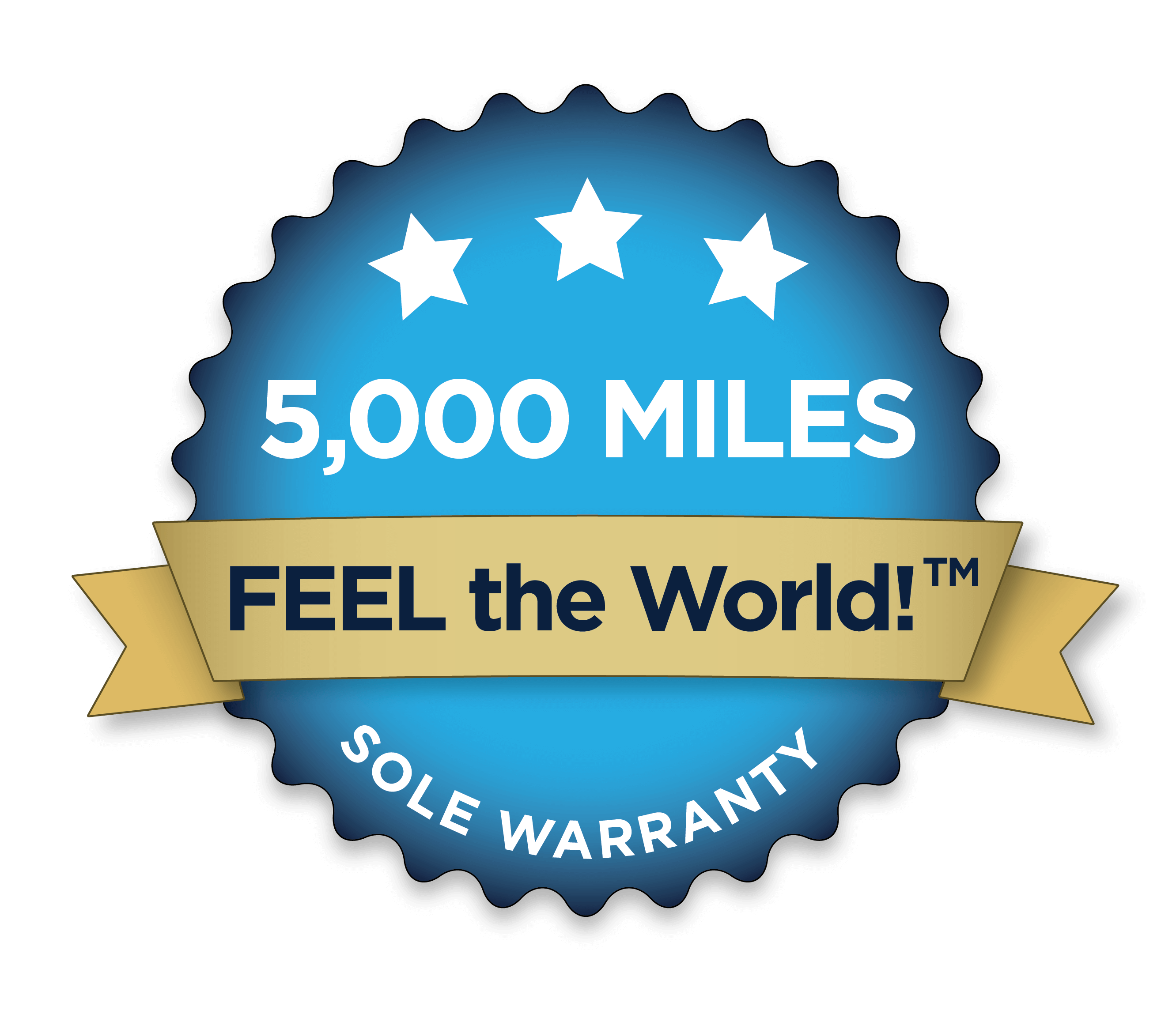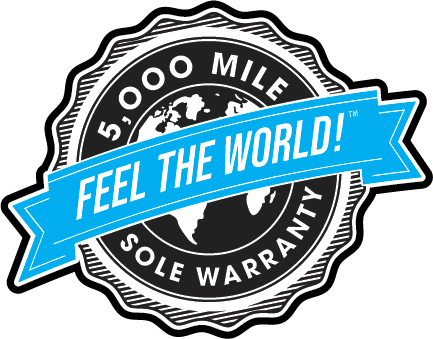If someone tells me they’re having almost any problem or issue with natural running, the odds are well over 75% that the issue comes from “overstriding.”
Overstriding is when you land with your foot further out in front of your body than is necessary or ideal. Watch little kids run and they almost never do it. Not even when chased by ravenous chickens!
Put modern running shoes on them, their gait will change, and they’ll start to reach out with their leg, landing on the heel.
Do this when you’re barefoot and it HURTS.
Do this in a barefoot-inspired or true-minimalist shoe, like Xero Shoes (both shoes and sandals), and you’ll typically hear of three issues:
- Sliding off the sandal or into the thong of the huarache-style sandal — this is because the sandal hits the ground and stops moving as your foot continues to move forward. Tightening the lace or webbing isn’t a real solution.
- Slapping noises — this comes from, well, slapping your foot onto the ground. When you land on your heel, your foot can’t articulate properly and the forefoot comes down with extra force. If you land on your forefoot when you overstride, that can lead to stress fractures, but first it’ll just be loud. See this article for some more info.
- Heel blisters — landing with your foot in front of your body is like putting on the brakes with each step, and that horizontal deceleration creates friction, and friction leads to blisters. See How to Avoid a Barefoot Running Blister and see the first video at https://xeroshoes.com/barefoot-myths-lies-and-truth-free-video-series/ for more about this.
If you land with your foot “under” your body (it may be slightly in front of your center of mass), all those issues go away. In fact, if you land that way, you can wear a sandal that’s barely tied to your foot and it won’t make any noise, nor will you slide off it and you won’t get blisters. It’ll be like you’re running barefoot, but just before you land, someone throws a piece of rubber on the ground.
Here’s one of my favorite examples. In this video, the runner accelerates to full speed on a carpet that’s over ICE… then runs for a few strides at full speed without any slipping.
You’ll have to pause the video and play with the slider to see how his feet are landing under his center of mass.
Whattya’ think?
The content of this post does not constitute and is not intended to be a substitute for professional medical advice, diagnosis or treatment. Always seek the advice of a physician or other qualified health provider with any questions or concerns you may have about your health or a medical condition.











 Fostering honest and responsive relationships between businesses and consumers.
Fostering honest and responsive relationships between businesses and consumers.














Question. If there is no horizontal force…how do you move forward? Reading this and your other article that says you should lift your foot up and place it down under your hips sounds like running in place. There HAS to be something propelling you forward. Where does this occur?
The research shows that the amount of horizontal force generated when you’re AT a consistent speed, is nominal. To get TO that speed, you apply horizontal force. What many people do incorrectly during that acceleration phase, is reach out with their foot and try to PULL the ground, rather than landing with the foot under the center of mass and PUSH (using the hip extensors for what they’re made).
So reaching for a goal of a sub 20 minute 5k, i should still be able to run that pace with no horizontal movement? I just ordered some daylite hikers and prios and have a race in 6 weeks. Just wondering if i should expect to keep my current pace (i currently run with new Balance minimus road zero drop shoes using forefoot strike, but I’m probably overstriding) or if i should expect to take lots of time correcting this.
I wouldn’t try to make any changes for a race that’s 6 weeks out.
In a 5k, with varying terrain (assuming your not on a track) and changing situations (deciding to pass someone, or someone stepping right in front of you, e.g.), you’re constantly adjusting, you’re not at a constant speed. The point is that in the times when you ARE at a constant speed, you only need apply a TINY amount of horizontal force to the ground to maintain that speed, unless you’re overstriding. If you’re overstriding, each time you land you’re applying braking forces that you then need to overcome with horizontal force … clearly not the most efficient way to run.
To correct overstriding requires attention, experimentation and, ideally, feedback — e.g. from video or even force plate measurements (that’s VERY high tech and not really necessary… but a lot of fun). Some people are more adept than others at making changes to movement patterns, so I can’t say how long it would take to check, and improve, your gait.
I think I have the overstriding issue sorted out. I can run and barely hear my feet hitting the ground now. My issue is that my foot does not stay centered in my sandals. My heels slowly drift to the outside. If it wasn’t for the ankle strap, my heel would probably be on the ground instead of the sandal. I am definitely not overstriding. My stride cadence is 180 to 190 and I am no longer getting any blisters under my feet. I don’t know if I am not adjusting the straps properly or if my feet are odd shaped or if the sandal is odd shaped. They are very comfortable, but my feet simply will not stay centered in them no matter what I try. It has taken me over a year to transition to this type of running. I’m worried that there’s still something wrong with my form or gait. I will frequently take the sandals off completely and run barefoot and then put them back on and attempt to run with the same form. The sandals start out centered on my feet and within hundred feet or so they have drifted again. Any advice would be appreciated.
Think about the physics of this: Either your sandals are hitting the ground and stop moving while your foot continues to move. Or, your foot hits the ground and twists the sandal.
Without video, I can’t tell you which it is. Feel free to send one (showing you from the front and back at ground level, and from the side, too). I have a prediction, but you won’t like it 😉
So far, every time I’ve seen this, it’s an overstriding issue. It’s possible to run quietly, land forefoot or midfoot, and still be overstriding. Think of it this way, if the sandal hit the ground and your foot just came straight down on top of it, you would stay centered.
I’m happy to be wrong, but neither of us will no more without slo-mo video to diagnose things with.